Bone graft addition
1. General considerations
Corticocancellous bone graft may be necessary for the following indications:
- Fracture comminution, particularly with palmar cortical bone defect
- Defect after removal of loose fragments
- Delayed presentation with bone resorption
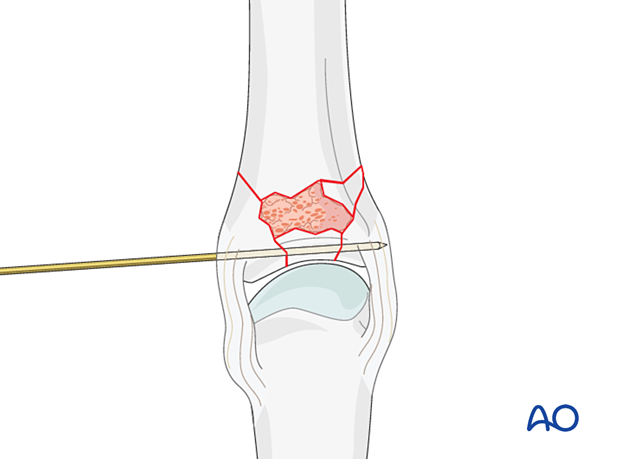
2. Harvest site
Corticocancellous bone can be harvested from:
- Distal radius, proximal and radial to Lister’s tubercle
- Iliac crest
- Proximal ulna

3. Harvesting
Make a 2 cm longitudinal incision proximal to Lister’s tubercle. Retract the tendons of the second compartment radially and the extensor pollicis longus (EPL) in an ulnar direction.
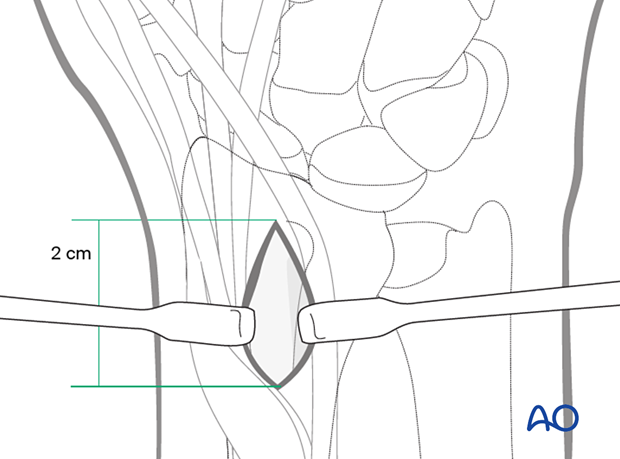
Use an osteotome chisel to cut three sides of a small square. Lift the dorsal radial cortex as a flap. After harvesting cancellous bone, replace the “lid” and close the wound.
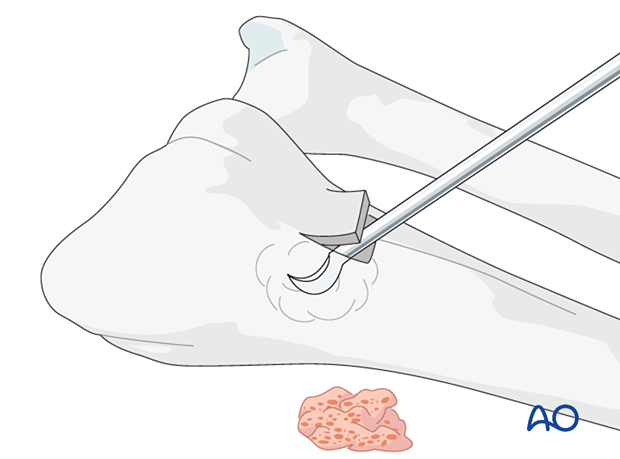
4. Impacted bone graft
Impacted bone graft in a cylindric shape may be helpful to fill large defects of the metacarpal and phalangeal shaft.
Preparation of the bone graft
Cancellous bone is harvested from the distal radius or the iliac crest. It is then chopped into tiny pieces and filled into a syringe of the bone diameter.
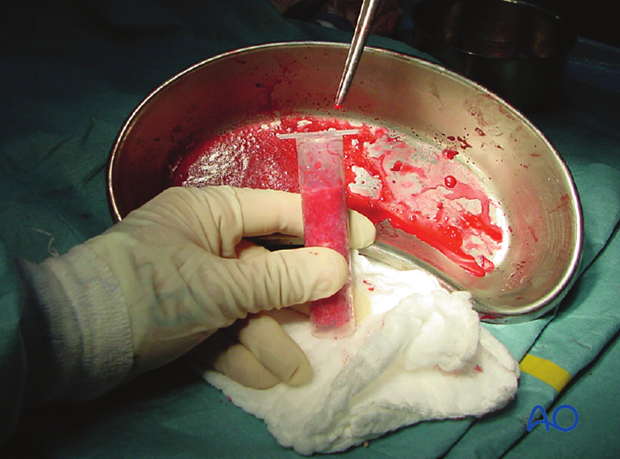
Impaction of the bone graft
Impact the bone graft using a mallet to compress the syringe plunger. This results in a high concentration of bone cells, increasing the potential for bone regeneration and healing.
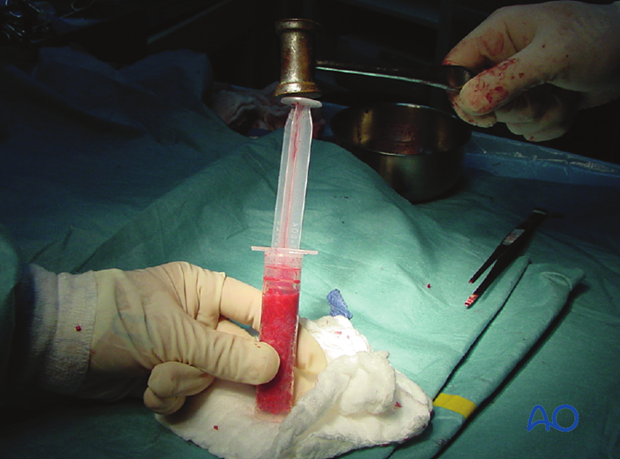
Insertion of graft into cavity
The bottom of the syringe is cut off using a scalpel.
Insert the compacted bone graft into the cavity by pressure on the plunger.














